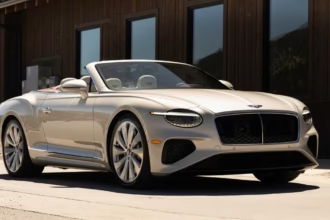New EV battery breakthrough promises ultra-fast charging and long lifespan, potentially revolutionizing the industry
What Does a 10-Minute Charge Mean for EV Drivers?
Imagine pulling into a charging station, grabbing a coffee, and driving off with an 80% charged electric vehicle (EV) battery in just 10 minutes. This isn’t a distant dream but a reality unveiled by researchers at Oak Ridge National Laboratory(ORNL). Their latest EV battery breakthrough promises to transform how we drive, charge, and think about electric vehicles. By achieving an 80% charge in 10 minutes while maintaining performance over 1,000 cycles, this innovation could make EVs more convenient and accessible than ever. But what makes this technology so revolutionary, and why is it causing ripples across the auto industry?

A Leap in Battery Design
At the heart of this EV battery breakthrough is a novel current collector developed in collaboration with Soteria Battery Innovation Group. Unlike traditional designs that rely heavily on copper and aluminum, this new component uses a polymer sandwiched between thin layers of these metals. The result? A lighter, more efficient battery that reduces material costs by up to 80%. With global demand for copper straining supply chains, this design not only lowers production costs but also eases reliance on critical materials. How might this shift influence the affordability of EVs for everyday consumers?
Balancing Speed, Range, and Durability
Fast charging often comes at a cost—degrading battery life or limiting driving range. ORNL’s innovation sidesteps these trade-offs. The new battery packs 27% more energy, enabling longer trips on a single charge. Even under extreme fast-charging conditions, it maintains significant energy density after 1,000 cycles, equivalent to years of regular use. For drivers, this could mean fewer stops and less worry about battery wear. Could this be the key to making EVs as practical as gas-powered cars for long-distance travel?
Why Scalability Matters
Innovations often stumble when moving from lab to market, but ORNL’s design is built for real-world application. Using industry-standard roll-to-roll production at ORNL’s Battery Manufacturing Facility, researchers ensured the technology is scalable. This means manufacturers can adopt it without overhauling existing processes, potentially speeding up its integration into new EV models. What challenges might automakers face in bringing this technology to showrooms, and how could it reshape the competitive landscape of the auto industry?
A Boost for Domestic Manufacturing
The EV battery breakthrough aligns with a broader push to strengthen US manufacturing. By reducing dependence on foreign-sourced materials like copper, this technology supports domestic production and enhances supply chain resilience. Funded by the Department of Energy’s Advanced Materials and Manufacturing Technologies Office, the project reflects a strategic effort to keep the US competitive in the global EV market. How might this innovation influence policy decisions around EV incentives and infrastructure development?

The Road Ahead for EVs
This breakthrough could redefine EV adoption. Faster charging times address a major pain point for consumers, while lower costs make EVs more accessible. The extended range and durability also cater to travelers and fleet operators, from road-trippers to delivery services. Environmentally, lighter batteries improve vehicle efficiency, reducing energy consumption and emissions. Could this technology accelerate the shift away from fossil fuels, and what role might it play in achieving climate goals?
Challenges and Opportunities
While the promise is immense, questions remain. How will automakers integrate this technology into diverse vehicle models? Will charging infrastructure keep pace with such rapid advancements? And how will consumers respond to EVs that rival the convenience of traditional cars? The collaboration between ORNL and Soteria suggests a strong foundation for commercialization, but scaling up will require investment and coordination across industries.
This EV battery breakthrough marks a pivotal moment for electric vehicles. By combining speed, longevity, and affordability, it paves the way for a future where EVs are the default choice for drivers worldwide. As this technology moves toward production, it could spark a new era of innovation, sustainability, and accessibility in transportation. What do you think this means for the future of driving?






